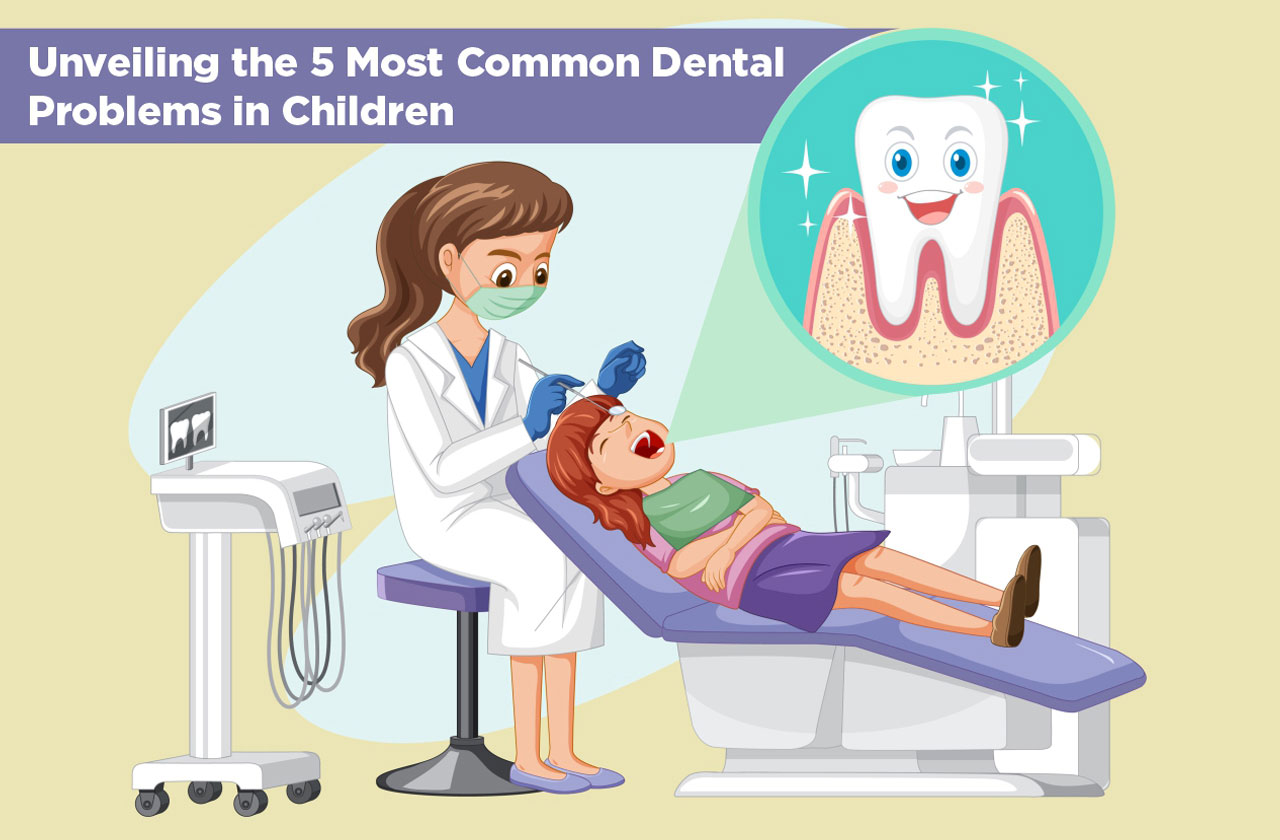Unveiling the 5 Most Common Dental Problems in Children
19 February 2024
Sub Heading if available
As parents, ensuring our children's oral health is a crucial aspect of their overall well-being. From the first tooth eruption to adolescence, understanding and addressing common dental problems in children is essential for promoting a lifetime of healthy smiles. Let's explore the five most prevalent dental issues affecting young ones and how proactive measures can help maintain optimal oral hygiene.
- Tooth Decay (Cavities):
Tooth decay, or cavities, tops the list of common dental problems in children. It occurs when bacteria in the mouth produce acids that erode the enamel, forming cavities. Factors such as poor dental hygiene, sugary diets, and irregular dental check-ups contribute to the prevalence of tooth decay in children.
Preventive Measures:
- Encourage regular brushing and flossing.
- Limit sugary snacks and drinks.
- Schedule routine dental check-ups and cleanings.
- Gum Disease (Gingivitis):
Gingivitis, characterised by inflammation of the gums, is another common dental problem in children. Poor oral hygiene practices, such as inadequate brushing and flossing, can accumulate plaque and bacteria along the gum line, resulting in gingivitis. Symptoms may include red, swollen gums that bleed during brushing.
Preventive Measures:
- Teach proper brushing and flossing techniques.
- Ensure regular dental check-ups for professional cleanings.
- Promote a balanced diet to support gum health.
- Tooth Sensitivity:
Tooth sensitivity in children is often a result of enamel erosion or tooth exposure due to receding gums. Children may experience discomfort or pain when consuming hot or cold foods and beverages. Sensitivity can arise from various factors, including aggressive brushing, acidic diets, or underlying dental issues.
Preventive Measures:
- Use a soft-bristled toothbrush to avoid enamel damage.
- Choose toothpaste formulated for sensitive teeth.
- Address underlying dental problems promptly.
- Malocclusion (Misaligned Teeth):
Malocclusion refers to the misalignment of teeth or a mismatch between the upper and lower jaws. It can manifest as overcrowding, overbites, underbites, or crossbites. Genetics, thumb-sucking, and prolonged pacifier use can contribute to malocclusion, impacting dental health and facial aesthetics.
Preventive Measures:
- Discourage thumb-sucking or pacifier use after a certain age.
- Monitor dental development and seek orthodontic evaluation if needed.
- Encourage early orthodontic intervention for timely correction.
- Dental Trauma:
Accidents or falls can lead to dental trauma, affecting children's teeth and oral structures. Fractured, chipped, or knocked-out teeth are expected consequences of such incidents. Prompt action is crucial in minimising long-term damage and preserving the affected tooth.
Preventive Measures:
- Encourage the use of mouthguards during sports activities.
- Promote a safe environment to minimise the risk of falls.
- Seek immediate dental attention in case of dental trauma.
Promoting a Lifetime of Healthy Smiles:
- Establishing Good Oral Hygiene Habits:
From the moment the first tooth emerges, instil the importance of oral hygiene in your child's routine. Start with gentle brushing using an age-appropriate toothbrush and a smear of fluoride toothpaste. As they grow, teach them proper brushing and flossing techniques. - Monitoring Diet and Nutrition:
A balanced diet plays a pivotal role in oral health. Limit sugary snacks and beverages, as excessive sugar intake contributes to tooth decay. Encourage a diet rich in fruits, vegetables, and dairy products that support overall dental health. - Regular Dental Check-ups:
Routine dental check-ups are vital for identifying and addressing potential issues early on. Dentists can provide professional cleanings, monitor dental development, and offer guidance on preventive measures tailored to your child's oral health needs. - Addressing Habits Promptly:
Thumb-sucking and pacifier use, while common in early childhood, can lead to dental problems if prolonged. Encourage your child to stop these habits as they grow older, and consult with a dentist if intervention is needed to prevent malocclusion. - Creating a Positive Dental Experience:
Fostering a positive attitude toward dental visits is essential for long-term oral health. Choose a paediatric dentist specialising in treating children and creating a comfortable, child-friendly environment. Making dental appointments enjoyable helps establish a positive association with oral care.
At Podar International School, we recognise the importance of holistic development, including instilling habits that contribute to a child's overall well-being. Our curriculum not only focuses on academic excellence but also emphasises the importance of health, including dental health.
Topics
AllChild LearningDays and FestivalsExtra Curricular Activities and SportsParents CornerSkill DevelopmentTechnologySchool Locations

